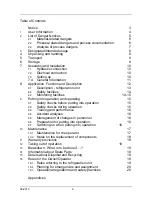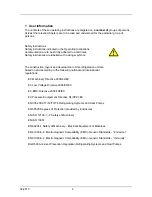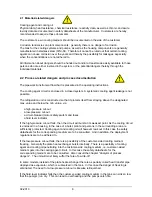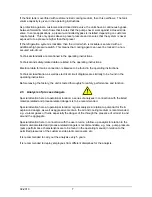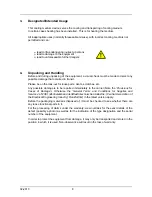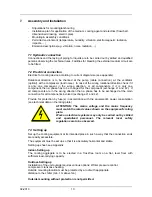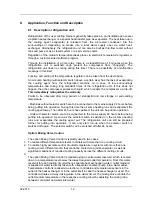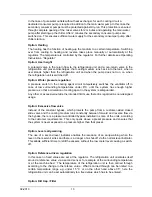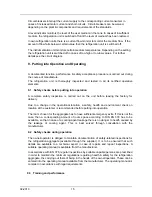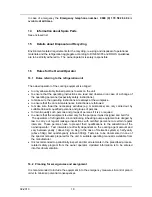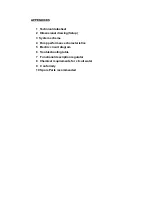
02-2010
6
2.1 Material-related dangers
Cooling agent and cooling oil
Physical data, heat resistance, chemical resistance, reactivity data, as well as chronic and acute
toxicity data are documented in safety datasheets of the manufacturer. Customers are hereby
recommended to acquire these documents.
The customer´s-own cooling medium should be documented on the side of the customer.
Corrosion tendencies on plant components: generally there is no danger of corrosion.
The tank for the cooling systems and pumps, as well as the housing components are generally
manufactured in stainless steel (CrNi-St). Therefore it cannot be ruled out that certain cooling
agents can cause corrosion over the years and thereby the possibility for leakages, especially
when the concentrations are not adhered to.
All information about dangers should be handed out and/or at least made easily available to those
persons who are either involved in the system, or the potential dangers thereby through the
individual materials.
2.2 Process-related dangers and process documentation
The pipework & instrument flowchart is presented in the operating instructions.
The cooling agent circuit is enclosed in a closed system. A systematic cooling agent leakage is not
possible.
The refrigeration unit is constructed so that it protects itself from straying above the designated
max. value and below the min. value, via
-
a high-pressure cut-out
-
a low-pressure cut-out
-
a circuit-breaker (motor safety switch) and fuses
-
a fluid level indicator
If the high-pressure cut-out fails, then the circuit will burst at its weakest point. As the cooling circuit
is enclosed in a housing, in the case of a burst, plant and persons in the surrounding area are
sufficiently protected. Cooling agent and cooling oil will however leak out In this case the safety
datasheets for the corresponding medium are to be consulted. And in addition, the deployment
regulations are to be adhered to.
If the low-pressure cut-out fails, there is a possibility of the customer-sided cooling medium
freezing. Generally the plate heat exchanger bursts internally. There is a possibility of cooling
agent and cooling oil penetrating into the customer-side cooling medium, i.e. customer-sided
medium gets into the cooling agent circuit. In this case the safety datasheets for the
corresponding medium are to be consulted. Also consult the chapter “Analysis of process
dangers“. The unit will most likely suffer the fate of a write-off.
In some models, instead of the plate heat exchanger there is a specially coiled heat transfer pipe
deployed as evaporator, which is submersed in the tank. In this case the danger of freezing is
eliminated. The need for a low-pressure cut-out is likewise relinquished.
If the fluid level indicator fails,then the customer-sided cooling medium in the tank can sink so low
that the pump(s) run dry. This can lead to overheating and the pumps catch fire.
Содержание Typ BR 058-31
Страница 23: ......


